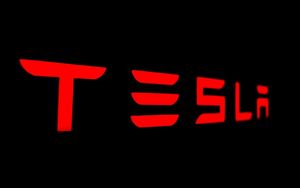By JE Insights, Benzinga
DETROIT, MICHIGAN - July 9, 2025 (NEWMEDIAWIRE) - Although Bitcoin and the broader cryptocurrency ecosystem have enjoyed a remarkable resurgence in recent sessions, the upswing also underscored a key point: BTC is incredibly volatile. Through a simple consequence of inopportune timing, an investor can potentially suffer hefty losses. To help mitigate the haphazard nature of the crypto market’s price discovery, Calamos Investments has introduced downside-protected Bitcoin exchange-traded funds.

Fundamentally, the unique challenges of the new economic paradigm under the Trump administration have impacted most market sectors, and digital assets are no exception. In January, Bitcoin traded hands above the $100,000 level. However, by early April, BTC could be acquired for around $76,000, representing roughly a 27% drop.
True, Bitcoin has since reclaimed the six-digit benchmark, exceeding $109,000 after posting an all-time high in May, but an uncomfortable narrative has also been written. If BTC did not recover and instead consolidated around the $76,000 level, crypto investors would have absorbed a hefty loss. It is in this - and similar - scenarios where Calamos’ downside-protected Bitcoin ETFs offer relevant solutions.
Thanks to a combination of sophisticated financial transactions and the unique geometry of multi-leg options strategies, Calamos offers retail investors synthetic exposure to Bitcoin with embedded risk/reward shaping. While pure exposure to BTC affords the highest reward potential, as the asset’s volatility demonstrates, the downside can be severe. To help address the volatility risk, Calamos’ ETFs incorporate derivative contracts that act like an insurance policy against downward price action.
At the same time, Calamos embeds an options strategy that’s structured much like a call spread: a long call that rises in value if Bitcoin swings northward and a short call that generates income and helps defray the cost of the trade.
Essentially, if Bitcoin rises robustly, the short call would be assigned - the call seller (writer) would be obligated to sell BTC at the underlying strike price. However, the long call (which is acquired at a lower strike price than the short call) offsets this obligation, translating to a capped or defined reward.

Conversely, if Bitcoin suffers a steep correction, the call spread component of the risk-defined ETF would expire worthless. However, the protective options strategy would kick in, providing the ETF product’s defined protection.
Investors should note that the targeted protection and capped returns only apply to positions acquired at the beginning of an outcome period and held to its conclusion. As such, Calamos ETFs offer more conservative-minded market participants exposure to crypto’s upside potential while hedging against its downside movements.
Modeling A Whiplash Year: How Calamos Bitcoin ETFs Respond To Volatility
While Calamos’ downside-protected Bitcoin ETFs offer a straightforward solution - essentially a capped-risk, capped-reward product - the mechanism can be somewhat convoluted. Therefore, it’s helpful to consider hypothetical scenarios.
Let’s suppose that an investor bought one of the Calamos products at the beginning of a one-year outcome period. During the first six months, assume that Bitcoin rose 50% and then in the second six months fell 50%, to end the one-year period flat. What would the approximate price level be for the various downside-protected ETFs at the six-month and 12-month intervals?
For the Calamos Bitcoin Structured Alt Protection ETF – January Overview (BATS: CBOJ), the investment pays a maximum value of 11.65% but only at expiration (i.e., at the end of the outcome period). At the halfway point, there’s still time value embedded in the short call, thus reducing the net present value of the ETF’s payoff.
Here, the math becomes a bit complicated, but in essence, the underlying call spread’s decay curve is at the halfway point. Therefore, the spread is approximately worth 45% to 60% of the maximum possible value. Translation? In this hypothetical scenario, the CBOJ investor can expect to be up between 5% and 7%.
At the 12-month mark, Bitcoin is assumed to have stumbled, ending up flat relative to the beginning of the year. If BTC continues to fall, the downside protection would kick in, and the CBOJ investor would see a 0% return, plus fees and expenses, irrespective of how low the crypto plunged.
For Calamos Bitcoin 90 Series Structured Alt Protection ETF – January Overview (Cboe: CBXJ), the investment pays a maximum value of 29.15% at expiration. Realistically, the value at the six-month mark for the CBXJ may be around 15% to 19%. At the 12-month mark, if Bitcoin falls flat relative to the beginning of the period, the return of the CBXJ would be 0%. Should BTC suffer an implosion, the most that can be lost is 10%, plus fees and expenses.
For Calamos Bitcoin 80 Series Structured Alt Protection ETF – January Overview (BATS: CBTJ), the investment pays a maximum value of 51.50% at expiration. Given that the CBTJ features the highest cap among the three ETFs featured above, at the halfway point, the value of the ETF could range between approximately 36% to 44%. At the 12-month mark, CBTJ would also return 0%. Should an implosion occur, downside exposure would be capped at 20%.
Finally, let’s consider another hypothetical example. If an investor buys CBOJ one month after its launch - at a time when Bitcoin has declined 10% from its original level - does the market participant need Bitcoin to rise 11% from that lower level, or from the original price at launch, in order to reach the fund’s cap by the end of the outcome period?
The answer to the above question is yes - Bitcoin would need to rise 11% from its original price at launch, not from the lower level at the time of purchase.
Since the cap in structured outcome ETFs like the CBOJ is fixed at inception and based on the reference asset’s level on the first day of the outcome period, the cap does not reset. This is true even if the investor buys shares (units) after a market decline. As a result, entering mid-period may reduce the likelihood of realizing the full capped return, even if the ETF’s market price appears unchanged.
An Alternative Approach To Navigating The Crypto Market
Ultimately, Calamos’ suite of downside-protected Bitcoin ETFs offers a pragmatic path for investors who recognize both the opportunity and danger embedded in crypto assets. While pure Bitcoin exposure may tempt with outsized rewards, the historical volatility of the space makes such strategies inherently risky. Through structured options overlays, Calamos reshapes the risk profile, limiting losses while still allowing for meaningful gains, especially for those willing to commit capital for the full outcome period.
However, these ETFs are not built for intraday speculation or short-term swing trading. The real value lies in disciplined entry and patience, buying at the beginning of the period and holding through to expiration. For investors seeking a more measured approach to crypto exposure, especially in politically or economically uncertain times, Calamos delivers a product that speaks the language of risk management without entirely muting upside potential.
As Bitcoin continues to gain acceptance as a portfolio diversification tool, Calamos is excited to introduce its latest trio of Protected Bitcoin ETFs. Like the prior series, these funds address BTC’s penchant for price volatility by offering investors a choice of protection levels to match their risk tolerance.
-
CBOY Calamos Bitcoin Structured Alt Protection ETF - July: 100% downside protection with an initial upside cap range of 9.00% to 11.00% and an initial NAV of $25.
-
CBXY Calamos Bitcoin 90 Series Structured Alt Protection ETF - July: 90% downside protection with an initial upside cap range of 24% to 28% and an initial NAV of $25.
-
CBTY Calamos Bitcoin 80 Series Structured Alt Protection ETF - July: 80% downside protection with an initial upside cap range of 43% to 48% and an initial NAV of $25.
Featured image from Shutterstock.
This post contains sponsored content. This content is for informational purposes only and is not intended to be investing advice.
This content was originally published on Benzinga. Read further disclosures here.
Before investing, carefully consider the fund’s investment objectives, risks, charges and expenses. Please see the prospectus and summary prospectus containing this and other information which can be obtained by calling 1-866-363-9219. Read it carefully before investing.
©2025 Calamos Investments LLC. All Rights Reserved. Calamos®, Calamos Investments® and Investment strategies for your serious money® are registered trademarks of Calamos Investments LLC.
Calamos Investments LLC, referred to herein as Calamos Investments®, is a financial services company offering such services through its subsidiaries: Calamos Advisors LLC, Calamos Wealth Management LLC, Calamos Financial Services LLC and Calamos Antetokounmpo Asset Management LLC.
Cap rates and ranges are shown gross of management fees. Initial cap rates shown are calculated at the end of the fund launch date. Cap ranges are estimates based on the last 15 trading days prior to range announcement, based on market conditions during the same period, and are subject to change. The actual cap rate may be different based on market events.
The information in each fund’s prospectus and statement of addition- al information) is not complete and may be changed. We may not sell the securities of any fund until such fund’s registration statement filed with the Securities and Exchange Commission is effective. Each fund’s prospectus and statement of additional information is not an offer to sell such fund’s securities and is not soliciting an offer to buy such fund’s securities in any state where the offer or sale is not permitted.
CBOJ, CBOA, and CBOY seek to provide investment results that, before taking fees and expenses into account, track the positive price return of the CME CF Bitcoin Reference Rate – New York Variant ("BRRNY") ("Spot bitcoin") up to a predetermined upside cap (the "Cap") while seeking to protect against 100% of losses (before fees and expenses) of (i) Spot bitcoin or (ii) one or more of the Underlying ETPs and/or Bitcoin Indexes, in each case, over a period of approximately one (1) year (the "100% Protection 1 Year Outcome Period").
CBXJ, CBXA, and CBXY seek to provide investment results that, before taking fees and expenses into account, track the positive price return of Spot bitcoin up to a Cap while seeking to provide a floor with protection to a maximum loss of 10% of the negative price return of Spot bitcoin (before fees and expenses) over a period of approximately one year (the "90% Protection Outcome Period").
CBTJ, CBTA, and CBTY seek to provide investment results that, before taking fees and expenses into account, track the positive price return of Spot bitcoin up to a Cap while seeking to provide a floor with protection to a maximum loss of 20% of the negative price return of Spot bitcoin (before fees and expenses) over a period of approximately one year (the "80% Protection Outcome Period" and collectively with the 100% Protection 1-Year Outcome Period, and 90% Protection Outcome Period, each an "Outcome Period").
The Funds will not invest directly in bitcoin. Instead, the Funds seek to provide investment results that, before taking fees and expenses into account, track the positive price return of Spot bitcoin by investing in options that reference the price performance of either (i) one or more underlying exchange-traded products ("Underlying ETPs") which, in turn, own bitcoin or (ii) one or more indexes that are designed to track the price of bitcoin ("Bitcoin Index").
The Target Outcome may not be achieved, and investors may lose some or all of their money. Each Fund is designed to achieve the Target Outcome only if an investor buys on the first day of the Outcome Period and holds the Fund until the end of the Outcome Period. While each Fund seeks to provide a specified percentage of protection against loss- es experienced by the price of Spot bitcoin for shareholders who hold Fund Shares for an entire Outcome Period, there is no guarantee it will successfully do so. If a Fund’s NAV has increased significantly, a share- holder that purchases Fund Shares after the first day of an Outcome Period could lose their entire investment. An investment in a Fund is only appropriate for shareholders willing to bear those losses. There is no guarantee the Capital Protection or Floor, as applicable, and Cap will be successful and a shareholder investing at the beginning of an Outcome Period could also lose their entire investment.
An investment in a Fund is subject to risks, and you could lose money on your investment in a Fund. There can be no assurance that a Fund will achieve its investment objective. Your investment in a Fund is not a deposit in a bank and is not insured or guaranteed by the Federal Deposit Insurance Corporation (FDIC) or any other government agency. The risks associated with an investment in a Fund can increase during times of significant market volatility. Each Fund also has specific principal risks, which are described below. More detailed information regarding these risks can be found in each Fund’s prospectus.
Digital Assets Risk: The bitcoin network was first launched in 2009 and bitcoins were the first cryptographic digital assets created to gain global adoption and critical mass. Although the bitcoin network is the most established digital asset network, the bitcoin network and other cryptographic and algorithmic protocols governing the issuance of digital assets represent a new and rapidly evolving industry that is subject to a variety of factors that are difficult to evaluate. Moreover, because digital assets, including bitcoin, have been in existence for a short period of time and are continuing to develop, there may be additional risks in the future that are impossible to predict as of the date of this prospectus. Digital assets represent a new and rapidly evolving industry, and the value of the Underlying ETPs’ shares depends on the acceptance of bitcoin. The realization of one or more of the following risks could materially adversely affect the value of the Underlying ETPs’ shares.
Investing involves risks. Loss of principal is possible. The Funds face numerous market trading risks, including authorized participation concentration risk, underlying ETP risk, cap change risk, capital protection risk or floor risk, as applicable, capped upside risk, cash holdings risk, concentration risk, clearing member default risk, correlation risk, costs of buying and selling fund shares, counterparty risk, derivatives risk, equity securities risk, FLEX options risk, interest rate risk, investment in a subsidiary, investment timing risk, liquidity risk, management risk, market maker risk, market risk, new fund risk, non-diversification risk, options risk, OTC options risk, position limits risk, premium-discount risk, secondary market trading risk, sector risk, tax risk, trading issues risk, U.S. Government security risk, U.S. Treasury risk, and valuation risk. For a detailed list of fund risks see the prospectus.
Cap Rate – Maximum percentage return an investor can achieve from an investment in the Fund if held over the Outcome Period. Protection Level – Amount of protection the Fund is designed to achieve over the Days Remaining.
Outcome Period – Number of days in the Outcome Period.
The Cboe Mini Bitcoin US ETF Index (MBTX) is based on 1/10th the value of the Cboe Bitcoin US ETF Index, a modified market capitalization-weighted index that is designed to track the performance of a basket of spot Bitcoin ETFs listed on US exchanges.





